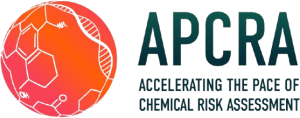Overall goal/objectives:
The available information has evidenced immunosuppression effects following PFASs exposure, in particular the reduction in the vaccination efficacy and possible increase in the susceptibility to infectious diseases; however the information is insufficient for a comprehensive risk assessment. The aim of the case study is to define and implement a NAM-based IATA protocol for addressing the abovementioned data gaps. The activities to be conducted include the design of and IATA and NAM-based test protocols to investigate the immunotoxicity mode of action of PFOS and PFOA. In a second phase, the experimental design will be extended, addressing differences in immunosuppression potency and mechanisms for different PFASs. Then, TK models will be used for a quantitative extrapolation of the in vitro results to the in vivo situation, and connected to AOP-like approaches for assessing the relevance of the results for human health. The project includes the integration of NAMs results in the regulatory risk assessments. In addition to the specific assessment of PFASs, a complementary purpose is to evaluate the current level of development of NAM methods in the area of immunosuppression, and specifically to address their capacity as supportive tools for regulatory risk assessments.
Case Study Leader:
EFSA (Jose Tarazona / Luisa Ramos Bordajandi)
Collaborators:
EFSA, FDA, Health Canada, NIH/NIEHS, UMilano-IT, UCatania-IT, WFSR-NL, ESQ-DE, HSE-UK
Status: In progress
- IATA and design the NAM-based studies for 1) identifying the mode of action of PFOS and PFOA under consultation
- Feasibility of using a mechanistic computational platform to simulate the human immune system in this case study under assessment
- Working toward modeling the dose-response behavior of the immunosuppression at animal doses and human daily exposure
Presentations or publications that have been publicly released:
- Held workshop on use of NAMs to address PFAS immunotoxicity, June 2021. EFSA call and workshop minutes available at https://etendering.ted.europa.eu/cft/cft-documents.html?cftId=9110

